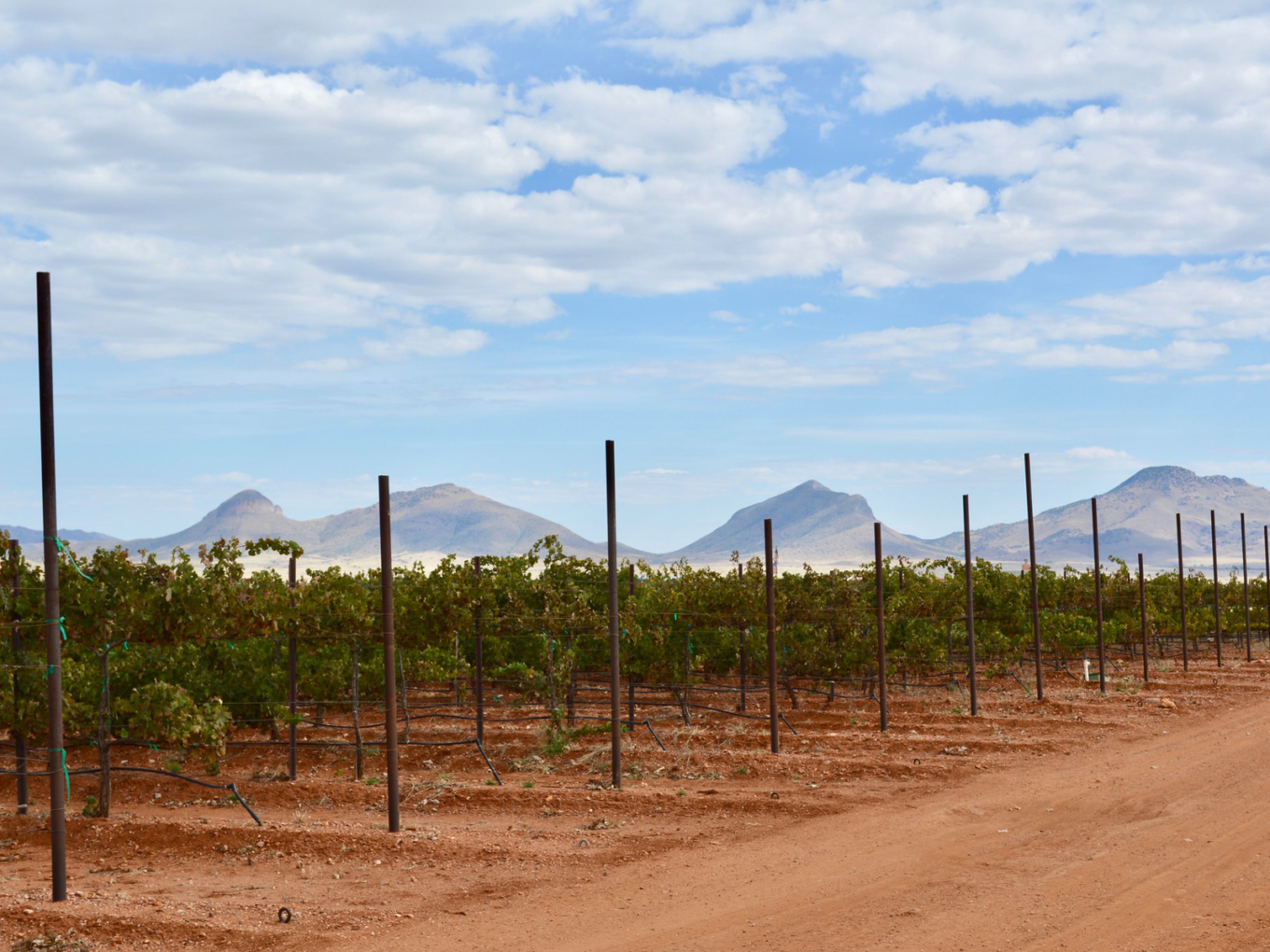With its temperate climate and high elevations Arizona provides a perfect setting for growing a diverse set of wine grapes including Syrah, Malbec, and Viognier. There are three prominent grape growing regions at various altitudes and locations around the state, the Sonita and Willcox regions located south and southeast of the city of Tucson and the Verde Valley region in the north near Sedona.
Origins of Winemaking in Arizona
The wine industry in Arizona, like in many of the southwestern states, dates to the 17th century when missionaries grew grapes and produced wine for religious services. In the 18th century a German settler in the Verde Valley established a large vineyard and found success selling wine to the local miners in Jerome. But as prohibition on alcohol gained steam Arizona enacted a ban on all production and sale of alcohol in 1915 and wineries were shut down, vines were torn up, and the budding Arizona wine industry collapsed.
Post-Prohibition
Prohibition ended in 1933 but it would not be till the mid 1970’s that the Arizona wine industry would start to be revived and not until the 1980’s that it would thrive. Arizona’s first modern commercial wine vineyard was Vina Sonoita, established in 1979 and others soon followed in the 1980’s in Willcox and later in 1997 in Northern Arizona.

The new winemakers faced several challenges including outdated alcohol regulations and they banded together to form the Arizona Wine Growers Association (AWGA) in 1981. A year later AWGA helped pass the Domestic Farm Winery Bill which allowed wineries to open tasting rooms and sell directly to customers. The passage of this law led to more interest and growth of the industry with a key milestone being the Sonita wine region becoming the Southwest’s first federally recognized American Viticulture Area (AVA).
Even with these early successes, Arizona’s wine industry faced many challenges amongst them marketing, public acceptance, plant diseases, and finding the right grapes and wine making techniques for the Arizona climate. The AWGA was instrumental in the promotion and expansion of the industry and as the wines improved so did the market for it. By the mid-1990’s one Sonita winemaker, Kent Callaghan of Callaghan Vineyards, had attracted national attention and even received rave reviews from famous wine critic Robert Parker.
The Northern Arizona region of Verde Valley was slower to flourish but by 2007 several wineries had been established in and around the historic town of Cottonwood and helped to revitalize its appeal. The growth and success of this wine region inspired Yavapai Community College to launch the state’s first enology program and today have an estate tasting room where one can sample the student’s work.
Today Arizona’s winemaking industry continues to grow and expand as well as gain local and national attention. According to the state wine guide there are 1,362 acres of vineyards in the state and 121 wine producers and wineries.
Sonita Region

Sonita is in the southern part of the state in the Sonita Valley and the towns of Sonita and Elgin where 15 winery tasting rooms are set up. Located about an hour from Tucson and just north of the Mexican border, Sonata sits at an elevation between 4,400-5,200 feet. It was the first of the regions in Arizona to be established and to receive the AVA designation in the state. The valley is surrounded by four mountain ranges which provide cooling winds in the high summer heat of 80-90 degrees. The unique mixture of reddish-brown gravelly loam soil along with 15-20 inches of rain during the summer monsoons make Sonita perfect for growing Sauvignon Blanc, Malbec, and Merlot grapes for award winning wines.
Willcox Region
Located in southeastern Arizona, Willcox, Kansas Settlement and the surrounding towns grow most of the state’s fruit, producing 75% of the grapes harvested in the state. Willcox sits high above the desert terrain with the vineyards planted along the base of the mountains at between 4,000 and 5,500 feet. Warm days and cool nights combined with an average rainfall of 13 – 18 inches, makes this an ideal climate for grape growing. The soils in the area vary significantly from site to site with mountain minerals being a key component to the rich flavor profiles of the grapes. Willcox was recently named the second state AVA with several of its eighteen wineries producing award winning wine from Grenache, Syrah, Riesling, and Viognier grapes.
Verde Valley Region
The Verde Valley is located approximately 2 hours north of Phoenix in what is known as the Red Rocks region and is rich in geological history. There is a variety of soils in the area including volcanic, limestone, sandstone, and basalt for grapes to grow in. Thick skinned grapes, like Cabernet Sauvignon do well in this region with Its elevation of 3,400-5,200 feet offering cool nights and hot desert sun by day to ripen. Twenty-five vineyards and wineries are sprinkled throughout the area in the towns of Sedona, Jerome, and Cottonwood, and the rural communities of Page Springs, Rimrock and others. The Verde Valley Wine Trail is the best way to tour this area and enjoy the beautiful scenery along with some delicious wine.
Feature Image: Flickr user Lauren Topor (CC BY 2.0)




Very interesting read, thank you. I never thought of Arizona as wine country. How available are the wines at my local (East Coast) store?